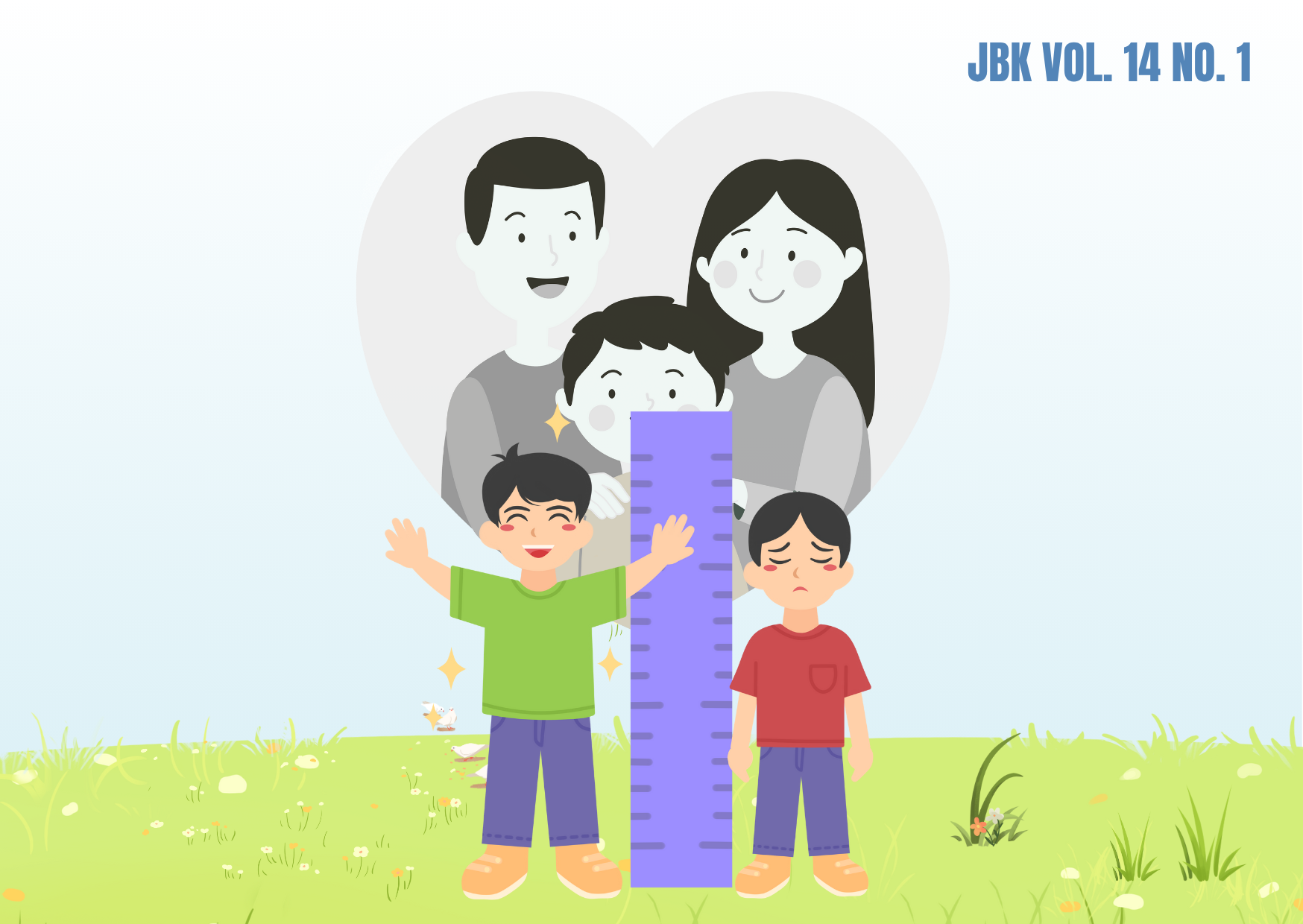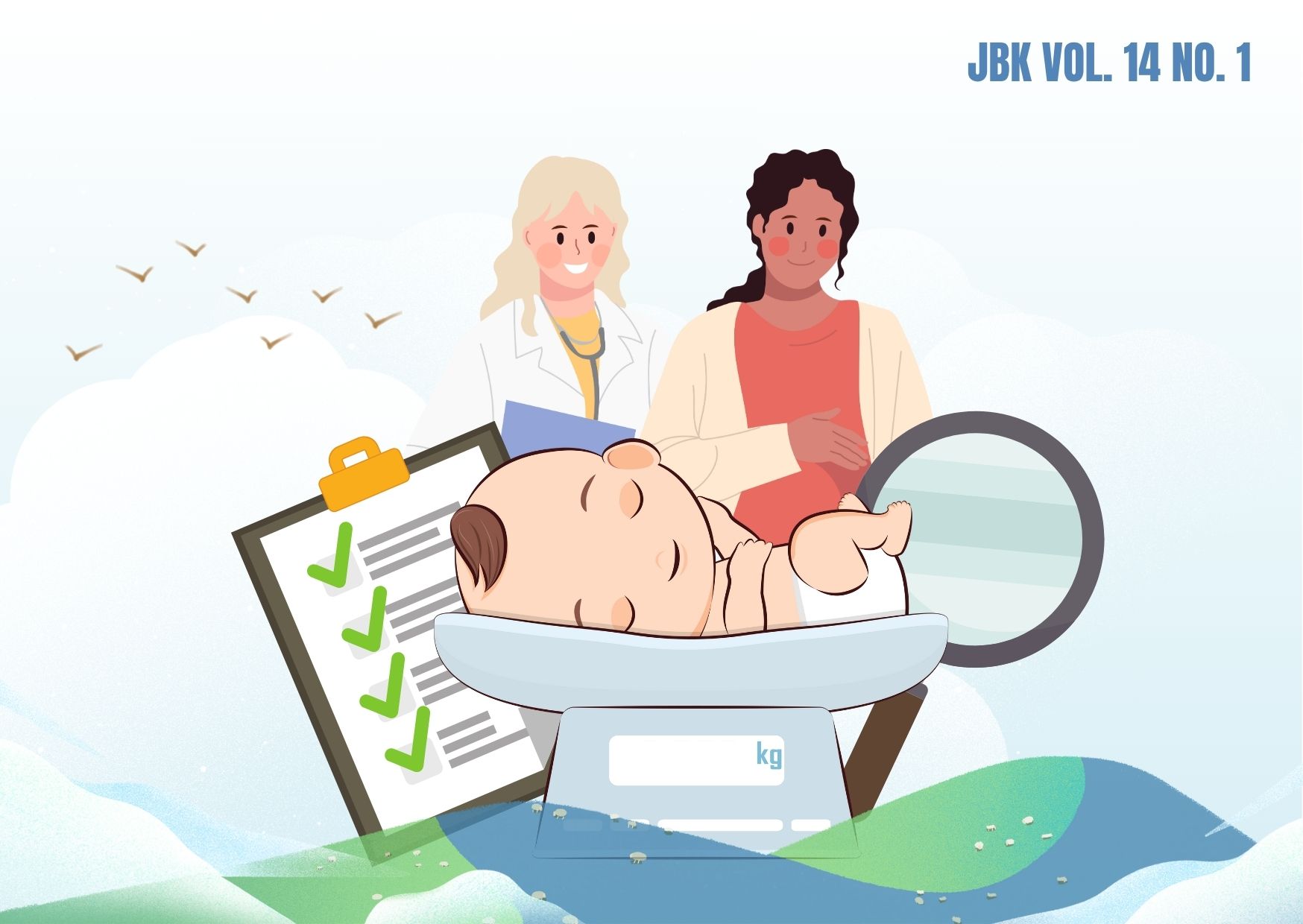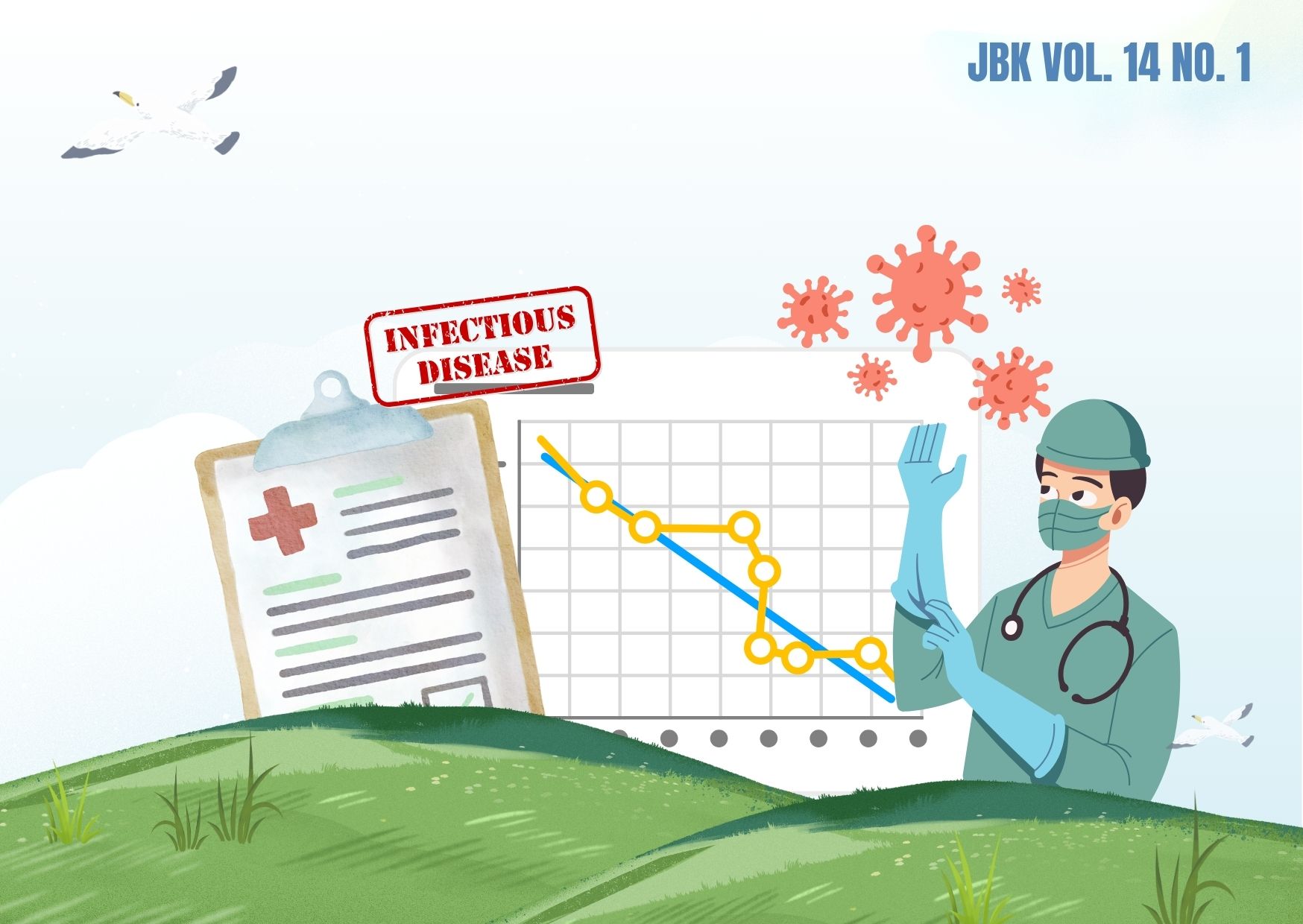FERTILITY BASED ON DEMOGRAPHIC AND SOCIAL ECONOMIC FACTORS IN WOMEN OF REPRODUCTIVE AGE IN BENGKULU PROVINCE (SECONDARY DATA ANALYSIS 2017 IDHS)
Downloads
The Total Fertility Rate (TFR) of Bengkulu Province is still at 2.31, meaning that there are still Women of Reproductive Age who have children >2. This condition affects the non-fulfillment of basic family needs. The purpose of this study was to determine the factors causing fertility based on demographic, social, and economic factors in Women of Reproductive Age in Bengkulu Province. This study is a study that uses secondary data from the Indonesian Demographic Health Survey (IDHS) in 2017. The population in this study is 49,250 households nationally. The number of households that were successfully interviewed in Bengkulu Province was 850. Ever married women aged 15-49 years were 809 people. Furthermore, the weighted sample was 364 people, from the weighted sample 274 samples met the criteria. The data analysis used in this study consisted of 3 types of data analysis, that is univariate analysis, bivariate and multivariate analysis. The results showed that there was a relationship between demographic factors, namely maternal age (p = 0.000), and husband's age (p = 0.000) with Women of Reproductive Age fertility. There is a relationship between socioeconomic factors, that is maternal education (0.026) with Women of Reproductive Age fertility in Bengkulu Province. The dominant factor causing fertility was age at marriage (p = 0.019 and OR = 1.911).
Christiani C, Tedjo P, martono B. Analisis Dampak Kepadatan Penduduk terhadap Kualitas Hidup Masyarakat Provinsi Jawa Tengah. Serat Acitya (Jurnal Ilmiah) [Internet]. 2014;3(1):102–114. Available from: http://jurnal.untagsmg.ac.id/index.php/sa/article/view/125
Pancasasti R, Khaerunisa E. Analisis Dampak Laju Pertumbuhan Penduduk terhadap Aspek Kependudukan Berwawasan Gender pada Urban Area di Kota Serang. Tirtayasa Ekon [Internet]. 2018;13(1):130–145. Available from: http://dx.doi.org/10.35448/jte.v13i1.4231
Central Bureau of Statistics, National Population and family Planning Board, Indonesian Ministry of Health, USAID. Survei Demografi Kesehatan Indonesia. BKKBN. 2017;1–606. Available from: https://www.bps.go.id/statictable/2020/10/21/2111/laporan-survei-demografi-dan-kesehatan-indonesia.html
Sunaryanto H. Analisis Fertilitas Penduduk: Provinsi Bengkulu. J Kependud Indones [Internet]. 2012;VII(1):19–38. Available from: http://ejurnal.kependudukan.lipi.go.id/index.php/jki/article/download/81/73
Ahmed GS, Saleh L, Alareed HR, El-Shabrawy EM, Elbahrawe RS. Effects of Sociodemographic Background on Fertility Motivation Patterns in the Beni-Suef Governorate, Upper Egypt. J Taibah Univ Med Sci [Internet]. 2022;17(5):853–860. Available from: https://doi.org/10.1016/j.jtumed.2022.04.006
Ainy H, Nurrochmah S, Katmawanti S. Hubungan Antara Fertilitas, Mortalitas, dan Migrasi dengan Laju Pertumbuhan Penduduk. Prev Indones J Public Heal. 2019;4(1):2–9. Available from:. Available from: http://dx.doi.org/10.17977/um044v4i1p15-22
Kistiana S, Nasution SL, Naibaho MMP. Faktor Kontekstual dan Individual terhadap Jumlah Anak Lahir Hidup: Sebuah Analisis Multilevel. J Kependud Indones [Internet]. 2020;15(1):33–48. Available from: https://doi.org/10.14203/jki.v15i1.433
Jatmiko YA, Wahyuni S. Determinan Fertilitas di Indonesia Hasil SDKI 2017. Euclid [Internet]. 2019;6(1):95–106. Available from: http://dx.doi.org/10.33603/e.v6i1.1516
Angko W, Arthur E, Yussif HM. Fertility among Women in Ghana: Do Child Mortality and Education Matter? Sci African [Internet]. 2022;16:1–9. Available from: https://doi.org/10.1016/j.sciaf.2022.e01142
Hadiyanto F. Faktor-Faktor yang Mempengaruhi Fertilitas di Jawa Barat. J Bul Stud Ekon [Internet]. 2017;22(1):34–42. Available from: https://media.neliti.com/media/publications/165154-ID-faktor-faktor-yang-mempengaruhi-fertilit.pdf
Marlina S, Normelani E, Hastuti KP. Faktor-Faktor yang Mempengaruhi Fertilitas di Kelurahan Pekauman Kecamatan Banjarmasin Selatan. JPG (J Pend Geogr) [Internet]. 2017;4(2):35–42. Available from: https://ppjp.ulm.ac.id/journal/index.php/jpg/article/view/3031
Sinaga L, Hardiani H, Prihanto PH. Faktor-Faktor yang Mempengaruhi Tingkat Fertilitas di Perdesaan (Studi pada Desa Pelayangan Kecamatan Muara Tembesi Kabupaten Batanghari). J Paradig Ekon [Internet]. 2017;12(1):41–48. Available from: https://doi.org/10.22437/paradigma.v12i1.3933
Arsyad SS, Nurhayati S. Determinan Fertilitas di Indonesia. J Kependud Indones [Internet]. 2016;11(1):1–14. Available from: https://doi.org/10.14203/jki.v11i1.65
Channon MD, Harper S. Educational Differentials in The Realisation of Fertility Intentions: Is Sub-Saharan Africa Different? PLoS One [Internet]. 2019;14(7):1–14. Available from: https://doi.org/10.1371/journal.pone.0219736
Funlayo AK. Fertility Preference in Older Women: Effect of Place of Residence and Use of Contraceptives in Nigeria. Int J Soc Sci Perspect [Internet]. 2021;8(1):25–30. Available from: https://doi.org/10.33094/7.2017.2021.81.25.30
Haque I, Das D, Patel PP. Reading The Geography of India's District-Level Fertility Differentials: A Spatial Econometric Approach. J Biosoc Sci. 2019;51(5):745–774. Available from: https://doi.org/10.1017/s0021932019000087
Ahinkorah BO, Seidu AA, Armah-Ansah EK, Ameyaw EK, Budu E, Yaya S. Socio-Economic and Demographic Factors Associated with Fertility Preferences among Women of Reproductive Age in Ghana: Evidence from the 2014 Demographic and Health Survey. Reprod Health [Internet]. 2021;18:1–10. Available from: https://doi.org/10.1186/s12978-020-01057-9
Raharja MB. Fertilitas Remaja di Indonesia. Kesmas Natl Public Heal J [Internet]. 2014;9(1):6–13. Available from: http://dx.doi.org/10.21109/kesmas.v9i1.449
García D, Brazal S, Rodríguez A, Prat A, Vassena R. Knowledge of Age-Related Fertility Decline in Women: A Systematic Review. Eur J Obstet Gynecol Reprod Biol [Internet]. 2018;230:109–118. Available from: https://doi.org/10.1016/j.ejogrb.2018.09.030
Angraini W, Pratiwi BA, Febriawati H, Yanuarti R, Anita B, Oktarianita O. Factors Affecting the Occurrence of Early Marriage. J Biomet Kepend [Internet]. 2019;8(2):183–191. Available from: https://doi.org/10.20473/jbk.v8i2.2019.183-191
Pratiwi BP, Angraini W, Padila P, Nopiawati N, Yandrizal Y. Analisis Pernikahan Usia Dini di Kabupaten Bengkulu Tengah Tahun 2017. J Kesmas Asclepius. 2019;1(1):14–24. Available from: https://doi.org/10.31539/jka.v1i1.575
Fauzi M, Listyaningsih U. Studi Dinamika Cerai Kawin terhadap Jumlah Anak Di Kecamatan Saptosari, Kabupaten Gunungkidul. J Bumi Indones [Internet]. 2015;4(4):1–7. Available from: https://www.neliti.com/publications/228245/studi-dinamika-cerai-kawin-terhadap-jumlah-anak-di-kecamatan-saptosari-kabupaten#cite
Prayanti N, Zulfanetti Z, Junaidi J, Wahyuni I. Faktor-Faktor yang Mempengaruhi Fertilitas di Kampung Keluarga Berencana (KB) di Kecamatan Muara Bulian Kabupaten Batanghari. 2021;16(3):425–436. Available from: https://online-journal.unja.ac.id/paradigma/article/view/12794/11592
Ahinkorah BO, Seidu AA, Budu E, Agbaglo E, Adu C, Dickson KS, Ameyaw EK, Hagan JE, Schack T. Which Factors Predict Fertility Intentions of Married Men and Women? Results from the 2012 Niger Demographic and Health Survey. PLoS ONE [Internet]. 2021;16(6):1–16. Available from: https://doi.org/10.1371/journal.pone.0252281
Olakunde BO, Pharr JR, Chien LC, Benfield RD, Sy FS. Individual- and Country-Level Correlates of Female Permanent Contraception Use in Sub-Saharan Africa. PLoS One [Internet]. 2020;15(12):1–15. Available from: http://dx.doi.org/10.1371/journal.pone.0243316
Jumliadi M, Hendarso Y, Nengyanti N. Research Gap dan Model Faktor yang Mempengaruhi Tingkat Fertilitas: Suatu Studi Literatur. JPP (J Kesehat Poltek Palembang). 2020;15(1):52–60. Available from: https://doi.org/10.36086/jpp.v15i1.467
Angraini W, Amrullah H, Febriawati H, Yanuarti R. Faktor Pendukung Pendewasaan Usia Perkawinan. J Bidan Cerdas [Internet]. 2021;3(4):159–167. Available from: https://doi.org/10.33860/jbc.v3i4.535
Zulkifli Z, Amri A, Munawar E. Analisis Fertilitas di Provinsi Aceh. J Perspekt Ekon Darussalam [Internet]. 2020;6(1):54–71. Available from: https://doi.org/10.24815/jped.v6i1.16173
Malinda Y. Hubungan Umur Kawin Pertama dan Penggunaan Kontrasepsi dengan Fertilitas Remaja Berstatus Kawin (Analisis Riskesdas 2010). J Kesehat Reproduksi [Internet]. 2012;3(2):69–81. Available from: http://ejournal.litbang.kemkes.go.id/index.php/kespro/article/view/3921
Copyright (c) 2023 Jurnal Biometrika dan Kependudukan

This work is licensed under a Creative Commons Attribution-NonCommercial-ShareAlike 4.0 International License.
Copyright©2022 Jurnal Biometrika dan Kependudukan (Journal of Biometrics and Population)
This work is licensed under a Creative Commons Attribution-NonCommercial-ShareAlike 4.0 International License.
1. Copyright of all journal manuscripts is held by the Jurnal Biometrika dan Kependudukan.
2. Formal legal provisions to access digital articles of the electronic journals are subject to the provision of the Creative Commons Attribution-ShareAlike license (CC BY-NC-SA), which means that Jurnal Kesehatan Biometrika dan Kependudukan to keep, transfer media/format, manage in the form of databases, maintain, and publish articles.
3. Published manuscripts both printed and electronic are open access for educational, research, and library purposes. Additionally, the editorial board is not responsible for any violations of copyright law.



































